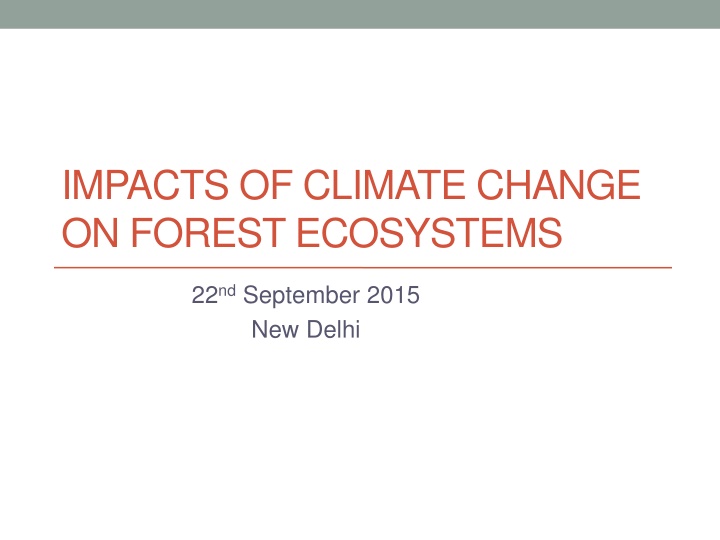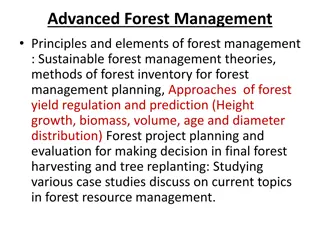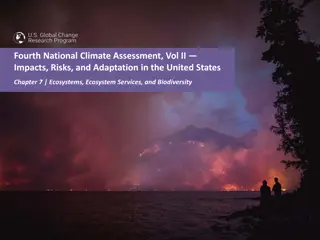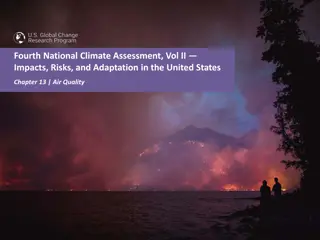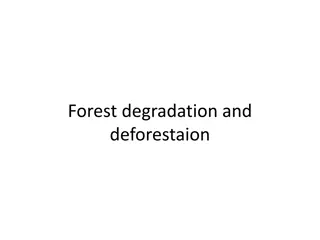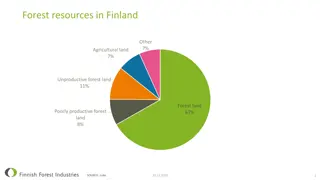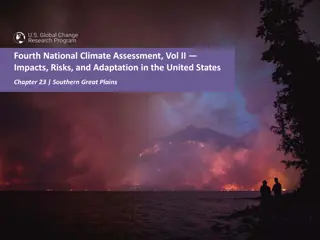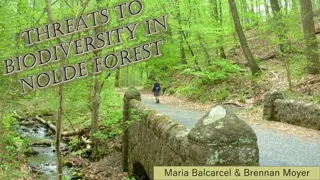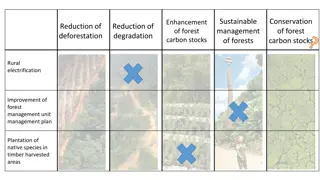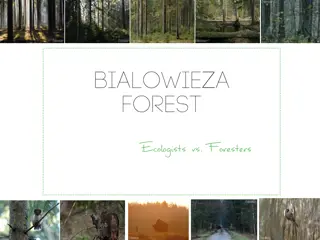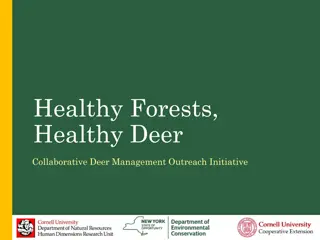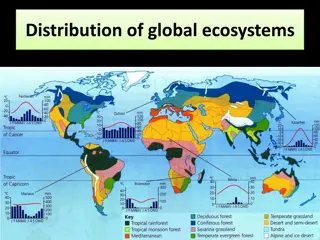IMPACTS OF CLIMATE CHANGE ON FOREST ECOSYSTEMS
Climate change poses significant challenges to forest ecosystems in India, with the Himalayan region being the most vulnerable. Shifts in forest types, biodiversity loss, and adverse impacts on local communities are some of the key concerns. Implementing adaptation practices and key principles can help mitigate these impacts and promote sustainable forest management.
Download Presentation

Please find below an Image/Link to download the presentation.
The content on the website is provided AS IS for your information and personal use only. It may not be sold, licensed, or shared on other websites without obtaining consent from the author.If you encounter any issues during the download, it is possible that the publisher has removed the file from their server.
You are allowed to download the files provided on this website for personal or commercial use, subject to the condition that they are used lawfully. All files are the property of their respective owners.
The content on the website is provided AS IS for your information and personal use only. It may not be sold, licensed, or shared on other websites without obtaining consent from the author.
E N D
Presentation Transcript
IMPACTS OF CLIMATE CHANGE ON FOREST ECOSYSTEMS 22ndSeptember 2015 New Delhi
Climate change on Forests of India The Himalayan forest eco- system are the most vulnerable to climate change The coastal and Western Ghats regions northern part Ghats are more vulnerable) and others are moderately vulnerable to climate change (esp. of the Western The minimally projected to be impacted by climate change (as there are predictions of increase in rainfall) north-east region is
Impacts on forests and communities More than 50% of India s forests will experience shift in forst types adversely impact associated biodiversity and livelihoods based on forest products 40-70% of the forest grids likely to experience change resulting in forest die back and loss of diversity which can be irreversible. Increased occurrences of fire, pest/diseases and invasive species Changes in species assemblage/forest type and NPP Forest dependent livelihoods may get severely affected, enhancing vulnerability of local communities.
Key principles to address impacts of CC on forests Intricate linkages of forests with Food, Water, Energy and Livelihood security of local communities Alongside afforestation, equal emphasis on restoring natural ecosystems like grassland and pastures, mangroves and other critical ecosystems ; as well as forests in urban/peri-urban landscapes. Contribute in protection/enhancement of forests having relatively less dense forest cover. Restoration of native bio-diverse species mix. Local communities to play a key role in prioritizing range of ecosystem goods and services. Empowerment of communities and strengthening of decentralized local governance of forests.
Adaptation practices to address climate change Need to enhance ecosystem services like carbon sequestration and storage (in forests and other ecosystems) Enhance biodiversity Enhances provisioning services like supply of fuel, fodder, small timber, and NTFPs Help adaptation of forest dependent local communities in the face of climatic variability
Win-Win Adaptation practices Expand Protected Areas Promote forest conservation, assisted natural regeneration and mixed species forestry Promote species mix adapted to different temperature tolerance regimes Develop and implement fire protection and management practices Promote in situ and ex situ conservation of genetic diversity Develop temperature, drought and pest resistance in commercial tree species Develop and adopt sustainable forest management practices Conserve forests and reduce forest fragmentation to enable species migration Adoption of energy efficient fuelwood cooking devices to reduce pressure on forests.
